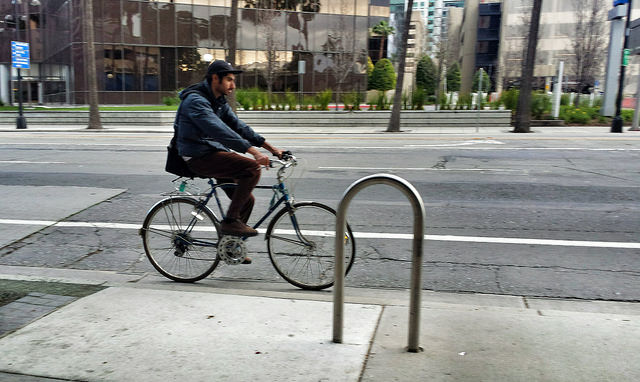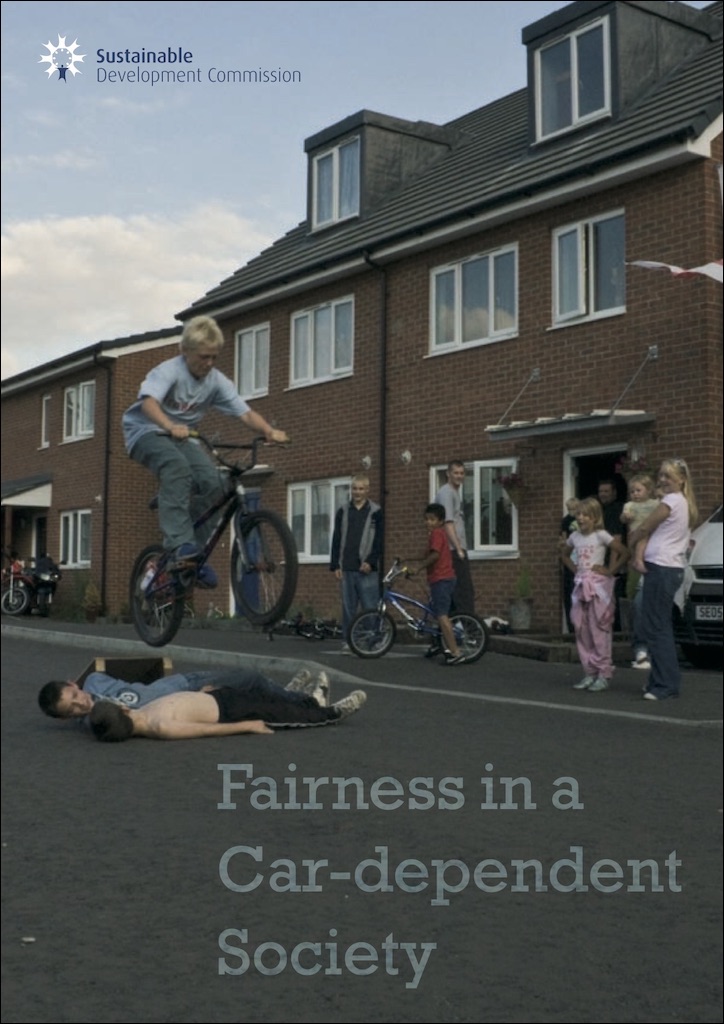How can we offer dignity to those on low incomes?
People on low incomes deserve the freedom to move safely, conveniently and enjoyably around Yarra, without being forced to own a car. This means that walking, cycling and public transport, supported by irregular use of car sharing, should be safe and convenient.
Council is committed to creating a city that is accessible to all, irrespective of levels of personal mobility, to support a fulfilling life without the need for a car.
City of Yarra Council Plan
Who are people on low incomes?
People on low incomes include:
- working-age people and other life-long renters,
- asylum seekers or refugees,
- people who live with profound financial hardship as a result of domestic abuse, illness, or family death,
- casualised workers,
- young people still living with their parents,
- couples just moving out of home, and
- seniors who are on fixed or limited incomes.
What Yarra can do
Yarra can improve walking, cycling, public transport, and car sharing, by allocating street space and budget to these modes, supported by revenue from increased charges for on-street parking. Space is needed for:
- wider footpaths and safe crossings,
- protected bicycle lanes that link 30 km/h streets in Low Traffic Neighbourhoods,
- protected level-access tram stops, and
- allocated parking bays for car sharing.
Budget is needed to pay for the necessary infrastructure improvements, and revenue is available by reforming the pricing of on-street parking. Unfortunately, council faces several barriers to implementation, including:
- Some residents don’t want council to allocate more street space to walking and cycling
- Some residents don’t want council to charge market rates for on-street parking
Each of us can help by showing our support for an increased allocation of street space and budget for walking and cycling, e.g. by appearing as a champion on the Streets Alive Yarra website.
Raising revenue while protecting people on low incomes
Yarra can protect people on low incomes from increases in parking charges by maintaining its existing policy of offering discounts for residents with valid concession cards, with the first permit free and further permits at a low flat rate.

Support from academia
The study concludes that the regressive effect of a market-rate residential parking benefit district should not be an impediment to implementing such a scheme because low-income permit purchasers can be subsidised with permit revenue from higher-income drivers in the district, resources from higher-income parking districts, or both. Additionally, revenues can be used to support transportation modes that particularly benefit all low-income residents.
Impact of Market-Rate Residential Parking Permit Fees on Low-Income Households
Many Australians, for reasons of disadvantage, disability or age, may not have access to a car. The typical cost of owning a car is A$300 per week. Increasing spending on walking and cycling infrastructure will therefore improve equity by helping low-income earners and others who need inexpensive mobility.
Matthew Mclaughlin and Trevor Shilton writing in The Conversation
Example from Strong Towns
…an important look at an “invisible” segment of the biking population: the low-income people who use their bikes to get to work, not to save a little money or for the purposes of exercise, but because they have no other option.
Rachel Quednau writing in Strong Towns

Support from the Sustainable Development Commission
The Sustainable Development Commission (SDC) was (until 2011) the UK Government’s independent adviser on sustainable development. They held Government to account to ensure the needs of society, the economy and the environment were properly balanced. Their “Fairness in a Car-dependent Society” report describes how people on low incomes are impacted if streets are dominated by cars, and how they would benefit by greater investment in walking, cycling and public transport. Most of this analysis also applies to people on low incomes in Yarra.
Conclusion
Overall, Yarra would be better for people on low incomes if council allocated more street space and budget to walking and cycling, supported by revenue from demand responsive parking charges. Similarly, if the state government built the Principal Bicycle Network and improved public transport, using funds from demand responsive driving charges.
How you can help
You can help by appearing on the Streets Alive Yarra website as a champion for your local street, neighbourhood, or school.

